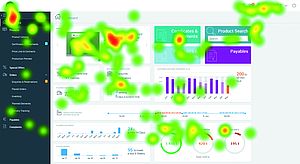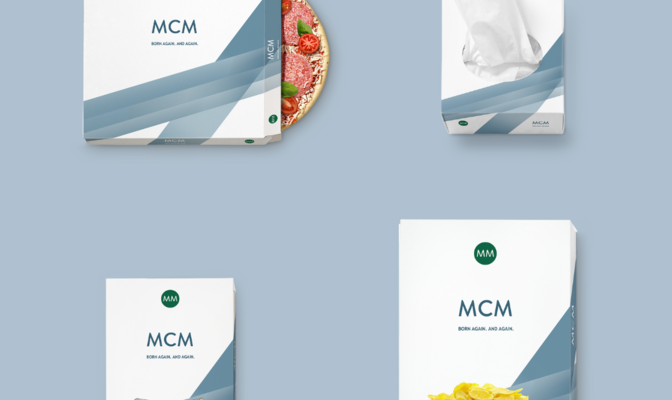MM digital: Focus on usability
27.03.2018 - Innovations / Investments, Company / Mills
The principle “the customer at the centre” has shaped the evolution of MM digital from the very start. Thanks to new, customer-centred business processes and numerous usability tests with more than 20 customers, we were able to create a user-friendly online platform that sets the standard in the B2B sector. It is modelled on well-known platforms in the private consumer sector (B2C) such as Amazon. Complete user friendliness was the main goal.
Usability – user experience – user interface design. In order to adapt our new service and sales channel to our customers’ requirements and needs as much as possible, we consulted with leading experts from the B2C sector. USECON, a global design and consulting firm specialising in usability and user experience, works mainly with international clients like McDonald’s and Lidl.
In a recent interview, Michael Bechinie, Head of Experience Design at USECON, explains what aspects were particularly important during the project and why customer-centred processes are at the heart of successful platforms:
What was particularly important in the development of MM digital?
When creating products and offers, a company should never lose sight of the target from the customer’s point of view. Business success is defined by customer satisfaction and customer loyalty. Only those who can ensure in the long term that customers can identify with the products and processes will be successful. During the development of MM digital, a crucial factor was the early involvement of representatives of a range of interests. On the MM Board & Paper side, that meant the relevant specialist departments, the developers, and the design department; on the user side, it included the various groups of customers. The aim was to take into account the diverse perspectives and requirements right from the earliest conceptualisation phase. The approach of user experience management was applied exceptionally well in interdisciplinary teams.
What was the method used to make MM digital as user-friendly as possible?
A perfect user experience does not just happen by accident: In order to make the usability and user experience of the platform the best it could be at all levels, we chose the human-centred design process, a framework we applied all through the course of the project. Users were actively involved right from the beginning of the project, and also during the different phases of development. The permanent feedback was consistently taken into account in the processes as well as the visual design of the platform. This was an iterative process that ran for 18 months – it is rare that companies focus this closely on the ideal process during product development. The result speaks for itself!

What expectations do customers have of an online platform?
Clear, simple, quick, and well structured, those are the customer requirements of online platforms. Customers need, for example, to order a certain cartonboard quality. The interface has to help them to achieve that task as effectively and efficiently as possible and without any prior knowledge. From the selection of the product to the ordering process and all the way to completing the purchase, the processes should be short. Users expect processes like the ones they know from their private consumption, e.g. from Amazon. Furthermore, building trust is a crucial issue in e-commerce. Customers need to know they can depend on the real-time information that they are shown.
Can you describe the concrete sequence of this process?
The conceptual development of MM digital essentially consisted of three phases: First was the analysis, in which the scope was defined: What users and user groups will be using the MM business platform? What tasks do the customers need to accomplish? In what context will the MM platform be used? In more than 25 usability workshops, we analysed existing business processes, and the benefits and target processes of the new platform were defined. The top management of MM Board & Paper gave us an absolute free-hand at this phase. The focus was 100 % on customer-centred processes. After that came a specification phase, during which we developed a prototype in close cooperation with the specialist departments and users. This was done in several loops, during which the requirements of the product were continuously adapted down to the last detail. The third phase was dedicated to evaluation. By means of numerous usability tests with more than 20 of MM Board & Paper’s customers, we identified and implemented optimisation potential.
By using the human-centred design (HCD) approach, we were able to produce results within a relatively short period of time – considering the level of complexity of the project. These were quite well received by the customers even during the development phase. The goal of developing a user-oriented online platform that places the customer at the centre was achieved 100 %.
The three development phases of the MMK business platform
HCD process phase | Activities | Results |
1st Phase: | Over 25 UX workshops: Analysis | “Personas” |
2nd Phase: | Iterative design and coordination with specialist departments and users, visual design and IT development | Concept design |
3rd Phase: | Fine-tuning with the specialist departments, extensive usability tests with over 20 customers, start of IT implementation | Feedback from customer view |
Usability
describes the quality of use experienced by the user during the interaction with a system. A particularly simple operation that fits the user and his tasks is considered user-friendly.
User experience (abbreviated: UX)
encompasses the entire experience of a user in handling a product or service, such as a web site.
User interface design
refers to designing user interfaces to be stimulating and motivating.
User experience management
includes all aspects of the user experience, usability, and human-centred design, to professionally develop and establish user-friendly products through user-oriented development processes.
Human-centred design process (abbreviated: HCD)
is a framework that can be used in any development project. An ISO standard (DIN EN ISO 9241-210) provides guidance as to the nature and application of the process. A basic feature of this method is that the various phases are conducted repeatedly – if necessary. This allows for optimum results.


